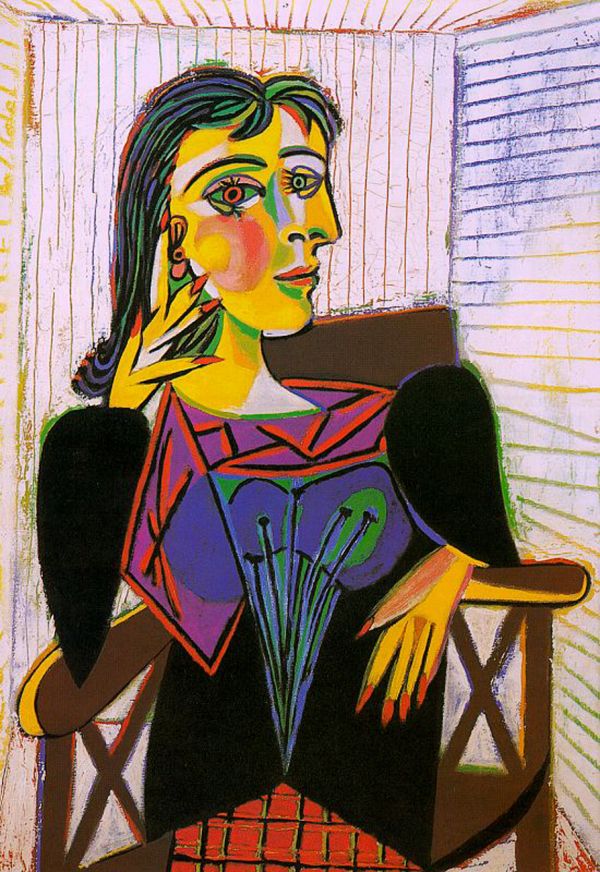 Pablo Ruiz Picasso was born in Málaga on 25 th October 1881. His father was a painting teacher and as a matter of fact, his first instructor who corrected his initial traits. When Picasso was 10 years old, his father was transferred to La Coruña (Galicia) and some years later to Barcelona. The paintings "Ciencia y Caridad" (Science and Charity), and "Primera Comunión" (First Communion) are from these first Catalan years, one of them being awarded with the medal of the exhibition hall, where they were exhibited. Those were the years when he became an independent painter.
Pablo Ruiz Picasso was born in Málaga on 25 th October 1881. His father was a painting teacher and as a matter of fact, his first instructor who corrected his initial traits. When Picasso was 10 years old, his father was transferred to La Coruña (Galicia) and some years later to Barcelona. The paintings "Ciencia y Caridad" (Science and Charity), and "Primera Comunión" (First Communion) are from these first Catalan years, one of them being awarded with the medal of the exhibition hall, where they were exhibited. Those were the years when he became an independent painter.
In 1900 he travelled to Paris for the first time. His friend Vollard gave him the opportunity to exhibit in an important gallery. On this occasion, critics realised the enormous potential of this artist from Málaga. The influence of the contemporary styles could not be noticed with him. He was inspired by Courbet, and at the same time (as) by Velázquez or a black mask. In Paris, he got to know the misery of the lower social classes and that made him paint these, the most outcast of beings, between 1901 and 1904. Those were the years of "El guitarista ciego" (the blind guitar player) , "La Celestina", "El abrazo" (the hug), "El viejo judío", (the old Jew), etc. ... That blue period, called this way because of the background of his paintings, gave way to other pictures with a different theme i.e. the circus; and a different background which was pink.
In those years, he became acquainted with Leo and Gertrude Stein, two rich North Americans who would help him further his artistic career, and with whom he would maintain a solid friendship.
When he made the portrait of Gertrude, the first seeds of cubism appeared, the figure seemed like an ensemble of volumes, and her face resembled a primitive idol.
This is the predecessor of "Las Señoritas de Avignon", where the bodies are as if they were cut by axe blows, and nothing superfluous distracts our view from the elemental. That picture of 1907 represented an artistic revolution in a similar way as the perspective in the Renaissance. He continued investigating this new style together with his friend George Braque for several years. Sometimes this led to the result that their pictures were so similar that it is hard to say who painted them.
 In 1917 the Russian ballet of Diaghilev came to Paris, and Picasso, thanks to his friendship with Jean Cocteau, was asked to design the scenery and costumes. Because of this work, he became acquainted with one of the most important women in his life: Olga Klokova, who became the mother of his first child, Paul.
In 1917 the Russian ballet of Diaghilev came to Paris, and Picasso, thanks to his friendship with Jean Cocteau, was asked to design the scenery and costumes. Because of this work, he became acquainted with one of the most important women in his life: Olga Klokova, who became the mother of his first child, Paul.
In that year he portrayed Olga, dressed (up) in Spanish style, with a Manila cloth and fan. In the Twenties, after a trip to Italy, he painted a series of pictures with a stony aspect and styled in the classical way.
In that epoch a group of French intellectuals proposed an artistic idea that is a lot more subjective and personal than was claimed by André Breton in the First Surrealist Manifest in 1924. At the beginning of the Thirties, Spain inaugurated the Second Republic, hopeful of a a future that was anticipated as being promising.
Picasso was designated director of the 'Museo del Prado', though, due to political circumstances, he never was to occupy that position.
Soon(,)the Spaniards awoke from a dream that was converted into a warlike nightmare. Picasso, being in France, was (not un)aware of the tragedy experienced by his country.
In 1937, the Universal Exposition was celebrated in Paris, and the Republican Government used this important occasion to let people know about the difficult Spanish situation.
José Renau, Director of the Fine Arts at this Exposition, entrusted Picasso, Miró, Juan Gris and other Spanish artists with their pictures.
On a Monday, an ordinary market day in March, Guernica, a small village in Biscaya, was bombed.
For Picasso, this would be the theme of his painting.
"El Guernica" full of symbolism, pain, and tragedy is not only a cry against the pain of the Basque people, but also against the grief of all the peoples that suffer from the scars of war.
For more than 40 years, "El Guernica" was just another exile from Spanish dictatorship.
Finally, in 1981, years after the dictator's death, the work came from its residence in the Museum of Modern Art in New York, to Madrid. Perhaps that was an occasion to celebrate the hundredth anniversary of its creator's birthday. Picasso, who like all great geniuses, maintained until his last days that his creativity was always bound to break up. Proof of this is in the series of engravings he made about the 'painter and his model' (el "pintor y su modelo") to be found in all of the the museums.
Picasso's family agreed to donate part of his pictorial heritage to the town who saw the genius come into this world. That is why Málaga is finally having a museum at its disposition that is dedicated to his work so that the people of Málaga and visitors from everywhere may enjoy his artistic genius.







